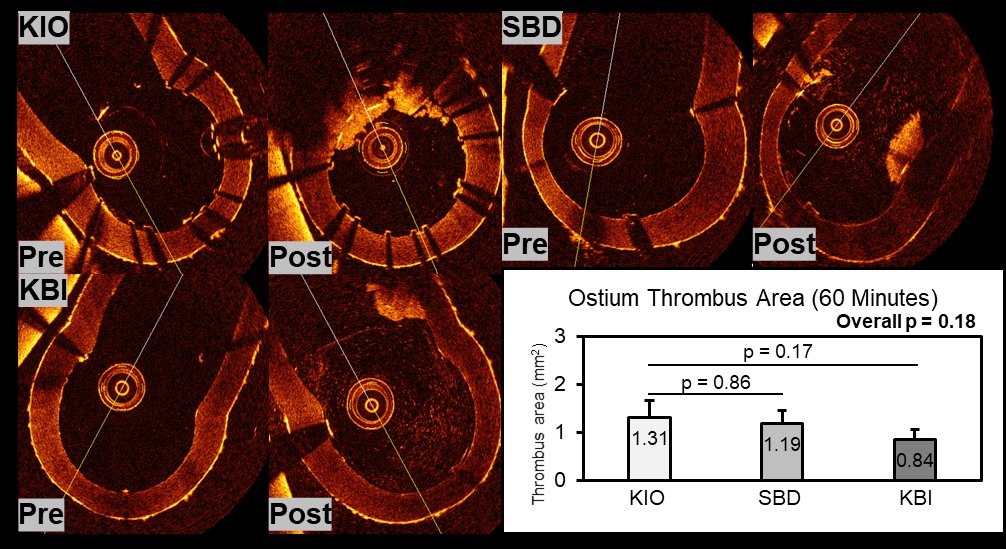Lots of interesting abstracts and cases were submitted for TCTAP 2021 Virtual. Below are accepted ones after thoroughly reviewed by our official reviewers. Don’t miss the opportunity to explore your knowledge and interact with authors as well as virtual participants by sharing your opinion!
TCTAP A-022
Presenter
Jaryl Ng
Authors
Jaryl Ng1, Valeria Paradies2, Shengjie Lu1, Georgios Vlachojannis3, Hwa Liang Leo4, Philip Wong1, Nicolas Foin5, Hui Ying Ang1
Affiliation
National Heart Centre Singapore, Singapore1, Maasstad Hospital, Netherlands2, University Medical Center Utrecht, Netherlands3, National University of Singapore, Singapore4, Duke-NUS, Belgium5
View Study Report
TCTAP A-022
Bifurcation/Left Main Diseases and Intervention
The Impact of Side Branch Dilatation for the Treatment of Bifurcations: An In Vitro Study
Jaryl Ng1, Valeria Paradies2, Shengjie Lu1, Georgios Vlachojannis3, Hwa Liang Leo4, Philip Wong1, Nicolas Foin5, Hui Ying Ang1
National Heart Centre Singapore, Singapore1, Maasstad Hospital, Netherlands2, University Medical Center Utrecht, Netherlands3, National University of Singapore, Singapore4, Duke-NUS, Belgium5
Background
Bifurcation stenting is associated with increased risk of adverse clinical outcomes. Provisional stenting with single stent is widely considered as the go-to method for the treatment of bifurcation lesions. “Jailed struts” that protrude into the side branch(SB) ostium are a potential cause of stent thrombosis if SB dilatation is not done. However, the benefit of routine SB dilatation has not been clearly demonstrated. This study aims to compare acute stent thrombogenicity between bifurcation models with provisional stenting between no SB dilation and two types of SB dilatation.
Methods
Stents were deployed in a silicon bifurcation model using three techniques: “keep it open” method (KIO),sequential single balloon dilatation (SBD) and kissing balloon inflation (KBI).Stented models were perfused with porcine blood (with 10% ACD) at a flow rate of 200 ml/min for 60 minutes. Optical coherence tomography (OCT) pullbacks were obtained before and after flow perfusion for strut analysis and acute thrombus formation measurement respectively. Computational fluid dynamics (CFD) models were created from the OCT pullbacks and simulated with experimental flow conditions to study local flow shear rates.
Results
Strut analysis revealed that KBI had the lowest percentage of floating (10.6±2.3%) and malapposed (41.2±5.8%) struts, followed by SBD (Floating struts: 14.2±0.9, Malapposed struts:49.3±30.6) and KIO (Floating struts: 21.9±23, Malapposed struts: 55.8±9.1). Acute thrombus formed reflected a similar trend, with KBI (0.84±0.22mm2) having the least thrombus formed followed by SBD (1.17±0.25mm2) and then KIO (1.31±0.36mm2). CFD analysis also predicted KBI having the lowest area of shear rate above 1000s-1 (KIO:2.50±0.36mm2, SBD: 1.96±0.47mm2,KBI: 1.41±0.16mm2).


Conclusion
Results show that SB intervention strategies reduce the amount of floating struts in the bifurcation SB ostia, leading to reduced flow disruption and lower acute thrombogenicity compared to KIO method. This bench study is hypotheses generating as clinical studies have shown no impact of dilating the SB versus not with single stent provisional stenting strategy.


